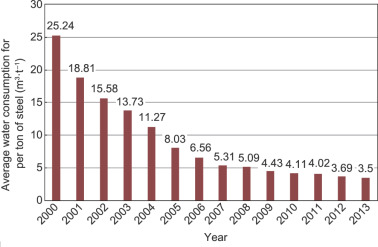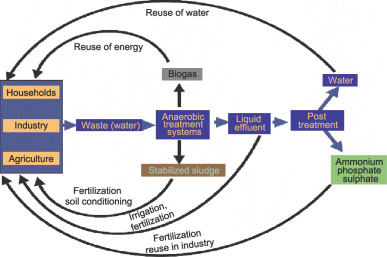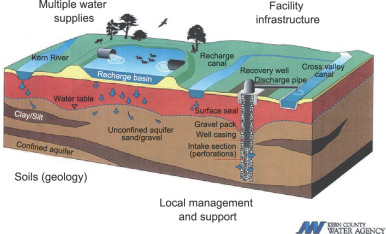1. Introduction
Water is a very valuable resource, sustaining human life, production processes, and ecosystems; thus, particular attention should be paid to the management of water resources. China is now facing a serious water crisis, including water shortages, flooding, and water pollution, due to both natural and artificial causes. This water crisis has threatened human health and economic development.
Natural water resources in China have two main characteristics. First, they are insufficient: Water availability in China is only 1780 m3 per capita, which is one quarter that of the global value and very close to the universally accepted figure for countries lacking water resources (≤1700 m3 per capita). Second, they are unevenly distributed: Although there are rich water resources in South China, there is a lack of water in North China. North China possesses 47% of the population and 65% of the farmland, but only 17% of Chinas water resources. In addition, rainfall is unevenly distributed over the four seasons in China.
Water pollution is caused by human activities. Industry, agriculture, and the activities of daily life all discharge wastewater and create water pollution. The seven major water systems in China all contain pollution to different degrees, including organic pollution, nutrient pollution, heavy metal pollution, persistent organic pollutants (POPs), and so forth. It is estimated that more than 100 million urban residents and 320 million residents in rural areas lack safe drinking water. Many accidents related to water pollution have occurred in China in recent years, seriously threatening peoples health and lives.
Flooding and water-logging are sudden events. However, most of the responsibility for these issues lies with sewer systems that are not well-designed, constructed, and/or operated. For example, some cities in North China have had flood-related accidents that were mainly caused by problems with urban sewer systems.
All these facts make it clear that close attention should be paid to the management of water resources in China in order to prevent the harmful effects of water crises. The targets of sustainable water resource management should include: providing sufficient water resources for economic development and the populations daily lives; protecting a clean water environment; ensuring safe drinking water; and preventing disasters caused by flooding and water-logging.
To ensure that the above targets are achieved, the sustainable management of water resources in China should be based on these strategies [ 1 ,2 ]:
- Making water conservation the main priority, and controlling water demand;
- Controlling water pollution rigorously and reducing the pollution created by sources;
- Using wastewater as water, energy, and fertilizer resources; and
- Preventing flooding and water-logging disasters, while using rainwater as a water resource.
2. Conserving water, controlling demand
For many years, people have viewed water as a cheap resource that can be used inexhaustibly. As a result, many people do not consider or limit their water usage. This attitude is extremely problematic and must be changed: Water demand should be controlled and people should use water carefully.
Table 1 shows the water usage of different users in China based on an investigation of a city.
| User | Water usage (L·(capita·d)−1 ) |
|---|---|
| Household | 150−250 |
| Office building | 200−400 |
| University | 300−700 |
| Hospital | 900−2500 |
| Hotel | 750−2600 |
As the figures in Table 1 show, the water consumption of different users varies considerably. Numerous factors affect the water use of different users. For example, a university will contain libraries, classrooms, laboratories, and so forth, all requiring a water supply. Hospitals require even more water for cleaning, operations, and so forth. However, a large potential exists for conserving water in all public buildings, as well as in private households. In Germany, for example, the average water usage is only 128 L·(capita·d)−1 , which is much lower than the usage in some Chinese cities.
Industrial production consumes water. Different industries consume different quantities of water, depending on the characteristics of the industry, the technologies used in production processes, and so forth. All industries should develop and use cleaner production processes as well as reducing their water consumption and the wastewater discharged by the production processes.
The iron and steel industry sector in China has had great success in conserving water in the past decade or more. Based on statistics from the China Iron and Steel Association, the average water consumed by the production of 1 t of steel was 25.24 m3 in 2000, a value that dropped to 3.5 m3 in 2013. The equivalent water usage by the Tangshan Iron and Steel Company was only 1.8 m3 ; moreover, the water used by this company was not tap water, surface water, or ground water, but reclaimed water. Thus, a very large potential for water conservation exists in the iron and steel industrial sector, if all the companies in this sector can reach a similarly high level of conservation. (Fig. 1 shows the change in average water consumption for the production of 1 t of steel in China. It can be found that the average water consumption for the production of 1 t of steel in 2013 was reduced by 86.1% compared with 2000.) Many excellent examples exist in other industrial sectors as well. Industrial water-saving technologies should be developed and implemented as soon as possible. Water conservation carries the additional benefit of reducing wastewater discharge−a win-win strategy against water crises.
|
|
|
Fig. 1. The change in average water consumption for the production of 1 t of steel in China.
|
Agriculture requires a great deal of water. Irrigation water for farmland makes up about 60% of the total water demand in China. However, the water utilization efficiency is only 53%. Thus, it is extremely important to implement advanced irrigation systems and technologies in order to increase the water utilization efficiency for agriculture in China.
3. Controlling pollution, reducing discharge from sources
People have been paying close attention to wastewater treatment for some time as a means of controlling pollution. However, practical experience teaches that the best way to control pollution is to reduce its production from sources [ 3 ].
For industries, cleaner production development and application are the best ways of reducing pollution production. Over the past five years, the Ministry of Industry and Information Technology has led a project to screen and investigate cleaner technologies and processes in 13 different industrial sectors. More than 1000 cleaner production processes and technologies have been selected, all of which result in reducing resource consumption and pollution production. The popularization of these processes and technologies can thus yield significant benefits.
China contains many industrial parks. Reforming existing industrial parks into ecological ones, or building new ecological industrial parks, is an effective way to control pollution sources. Industries in ecological industrial parks build symbiotic relationships with other industries, so that the wastes discharged by one industry can be used as the raw materials for another. These relationships reduce both costs and pollutants, in another good example of a win-win strategy.
The wastewater discharged from farmland and from farmers' daily activities is a major source of non-point pollution and cannot be neglected when considering water pollution control. The best strategies here are to implement eco-agriculture and build eco-villages. The main characteristics of eco-agriculture are less chemical fertilizer usage, less chemical pesticide usage, and less water usage. In addition, the bio-wastes created in eco-agriculture and in eco-villages are used as an energy source or as other kinds of resources.
Source-separation processes and facilities for domestic wastewater have been developed over the past 20 years in Europe. The toilet has been reformed and domestic wastewater can be separated into grey water (less-polluted wastewater from cleaning activities), yellow water (flushing wastewater for urine), and black water (flushing wastewater for feces). These systems and facilities can significantly reduce water consumption and enable the reuse of wastewater as a resource.
4. Using wastewater as a water resource and as an energy resource
Reducing the discharge of pollutants from their sources is extremely important; however, treatment of the wastewater created by daily life activities is also necessary as a means of dealing with pollution [ 3 ,4 ].
For a considerable period of time, the goal of wastewater treatment has been to prevent wastewater from having harmful effects on the environment and on human health. However, converting wastewater into energy or other resources is a new concept and a new direction for wastewater treatment, which has been discussed for the past three decades. Engineers have made great efforts in developing and applying new processes and technologies for wastewater reuse. Today, the use of wastewater as a water resource and as an energy resource has become a major strategy in the sustainable management of water resources [ 2 ,3 ].
Wastewater is a valuable resource. Reclaimed water can be used for agriculture, industries, and cities as a water resource. Organic pollutants from wastewater can be converted into energy, making wastewater an energy resource as well. Nitrogen, phosphorus, potassium, and magnesium are often contained in wastewater and can be recovered and reused as fertilizers or chemicals.
Targets for the reuse of reclaimed water should be carefully selected. Agriculture is the biggest water user in China, so close attention should be paid to the reuse of reclaimed water for irrigation. If reclaimed water is intended for irrigation, the removal of nitrogen and phosphorus should not be included in the design of a wastewater treatment process, since these elements are needed by plants as fertilizer. Thus, using reclaimed water for farmland irrigation can reuse water, nitrogen, and phosphorus together, while reducing water treatment costs by retaining nitrogen and phosphorus in the wastewater−yet another win-win strategy. Reclaimed water can also be used for industrial cooling, municipal cleaning, green land irrigation, and other purposes. As a country with very limited water resources, Singapore successfully uses reclaimed water as a water source.
The development and use of high-efficiency, low-cost, appropriate technologies for wastewater treatment is very important [ 3 ,4 ]. For example, anaerobic biological treatment does not consume energy; rather, it converts organic pollutants in wastewater into an energy source, methane gas. In contrast, aerobic treatment processes consume oxygen and produce carbon dioxide from stabilizing the organic pollutants in wastewater. Thus, anaerobic treatment processes should be improved and applied in the future. In addition, increased attention should be paid to natural ecological systems such as oxidation ponds and land treatment systems such as wetlands as future means of treating wastewater, especially in rural and lower-population areas.
Fig. 2 shows a new wastewater treatment process proposed by Wageningen University in the Netherlands. This process leaves nothing to be discharged into the environment, but reuses all parts of the wastewater as resources. The core treatment technology is anaerobic bio-treatment. As this process shows, the utilization and treatment of sludge is an important part of the wastewater treatment process and must also be considered.
|
|
|
Fig. 2. A new wastewater treatment system proposed by Wageningen University, the Netherlands.
|
Many countries around the world have been very successful with the reuse of reclaimed water. Israel has limited water resources but can still export food to other countries, mainly because its utilization rate of reclaimed water is as high as 90%. There, the problem of water shortage has been solved by effective water resource management strategies. China has much to learn from Israel.
5. Preventing flood disaster, using rainwater as a water resource
As mentioned above, flood disasters have occurred even in cities located in arid parts of China because of problems with sewer systems. Although effective systems must be established for collecting and discharging rainwater in urban areas, the new concept for preventing flooding and water-logging disasters is to make rainwater into a resource. In order to do so, a variety of facilities should be installed at different levels and locations in a city in order to collect rainwater and make it available for use. For example, water collection systems may include water tanks on top of buildings and collecting systems and tanks in residential areas. The rainwater collected can be used in dry seasons for flushing toilets, irrigating green land, road cleaning, and so forth−thus converting excess rainwater from a disaster into a resource.
Kern County is a county in California, USA, which is short of water resources. The county has developed a “water bank” concept that involves storing rainwater during flood seasons below the ground, and then using this groundwater as a resource during dry seasons. Considerable effort has been put into practicing this concept. The surfaces of roads, ponds, canals, yards, and so forth are all permeable, allowing rainwater to sink into the ground. Within this concept, the groundwater functions just like a bank: Surplus water can be stored in a rainy season and taken out again when needed. The operation of the water bank also follows the rules of a real bank: When users do not overuse their water supply, as indicated by the water consumption standard, the water bank stores any remaining amount of water for their further use. The application of the water bank has obviously lightened the water shortage problem in Kern County, and has raised the groundwater level, as shown in Fig. 3 .
|
|
|
Fig. 3. Diagram of the successful water bank and recovery program at Kern County, California, USA.
|
Effective policies, careful management of administrations, and appropriate technologies are essential for the successful implementation of the strategy described above. For example, wastewater treatment processes and technologies should be developed and improved, and the plans and designs of water and sewer systems should be improved [ 5 ].
Many Chinese cities are already working to transform themselves into “sponge cities,” a process that will contribute to the management and use of rainwater.
The sustainable management of water resources is a necessary safeguard for sustainable development. More should be done in implementing water resource management strategies in order to promote the sustainable development of China and the world.
References
- 1 ZY Qian, GD Zhang (Eds.), Study on sustainable development of water resources strategy in China, China Water & Power Press, Beijing (2001) Chinese.
- 2 R Engelman, P LeRoy; Sustaining water: pollution and the future of renewable water supplies, Population and Environment Program, Population Action International, Washington, DC (1993)
- 3 ZX Zhang, Y Qian; Urban sustainable development and water pollution prevention countermeasure, China Architecture & Building Press, Beijing (1998) Chinese.
- 4 ZJ Zhang, Y Qian, FJ Zhang (Eds.), Environmental engineering handbook: water pollution control, Higher Education Press, Beijing (1998) Chinese.
- 5 Water Resource Field Strategy Research Group of Chinese Academy of Sciences; Water science and technology in China: a roadmap to 2050, Science Press, Beijing (2009)
Document information
Published on 06/04/17
Licence: Other
Share this document
claim authorship
Are you one of the authors of this document?



